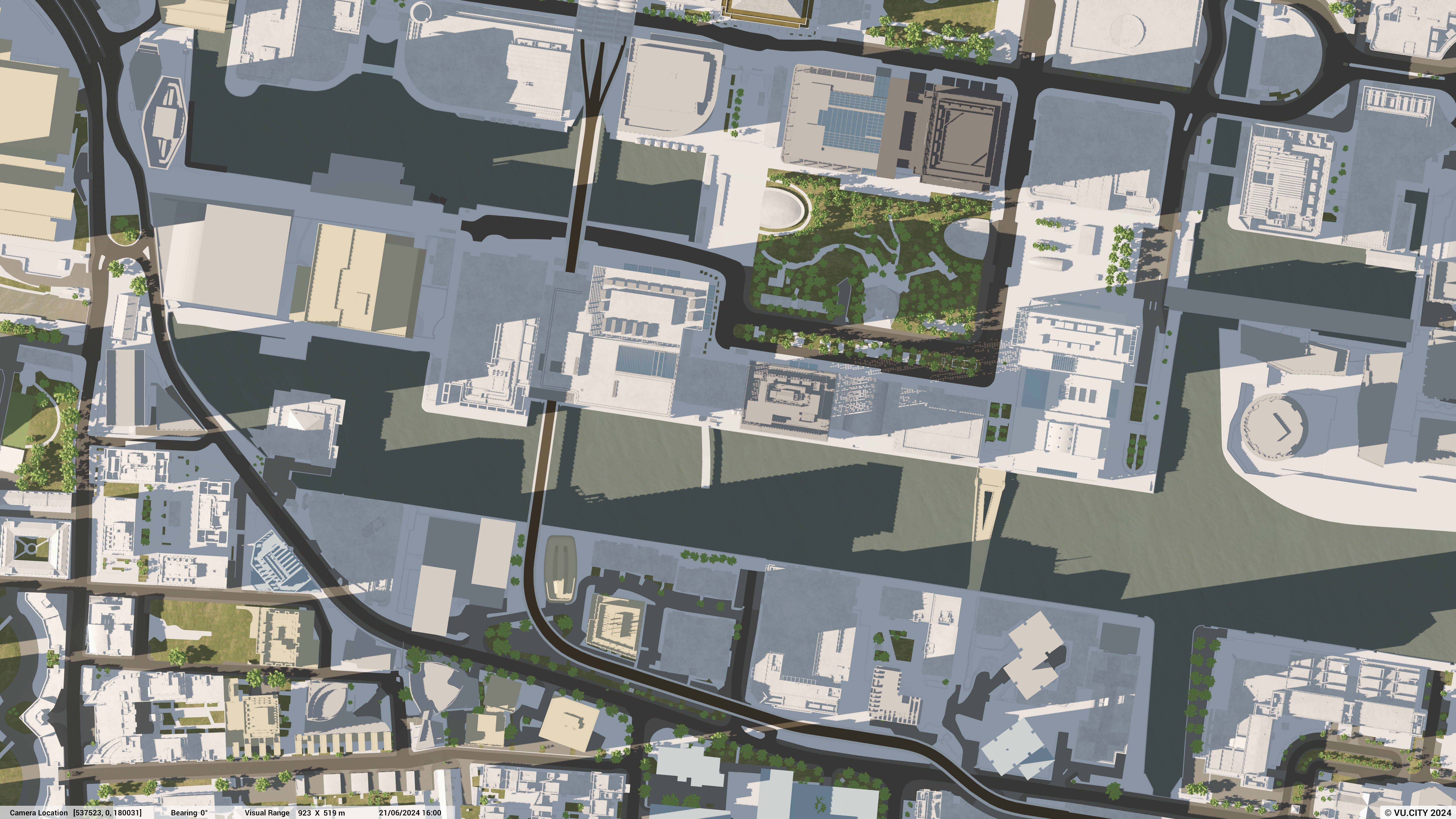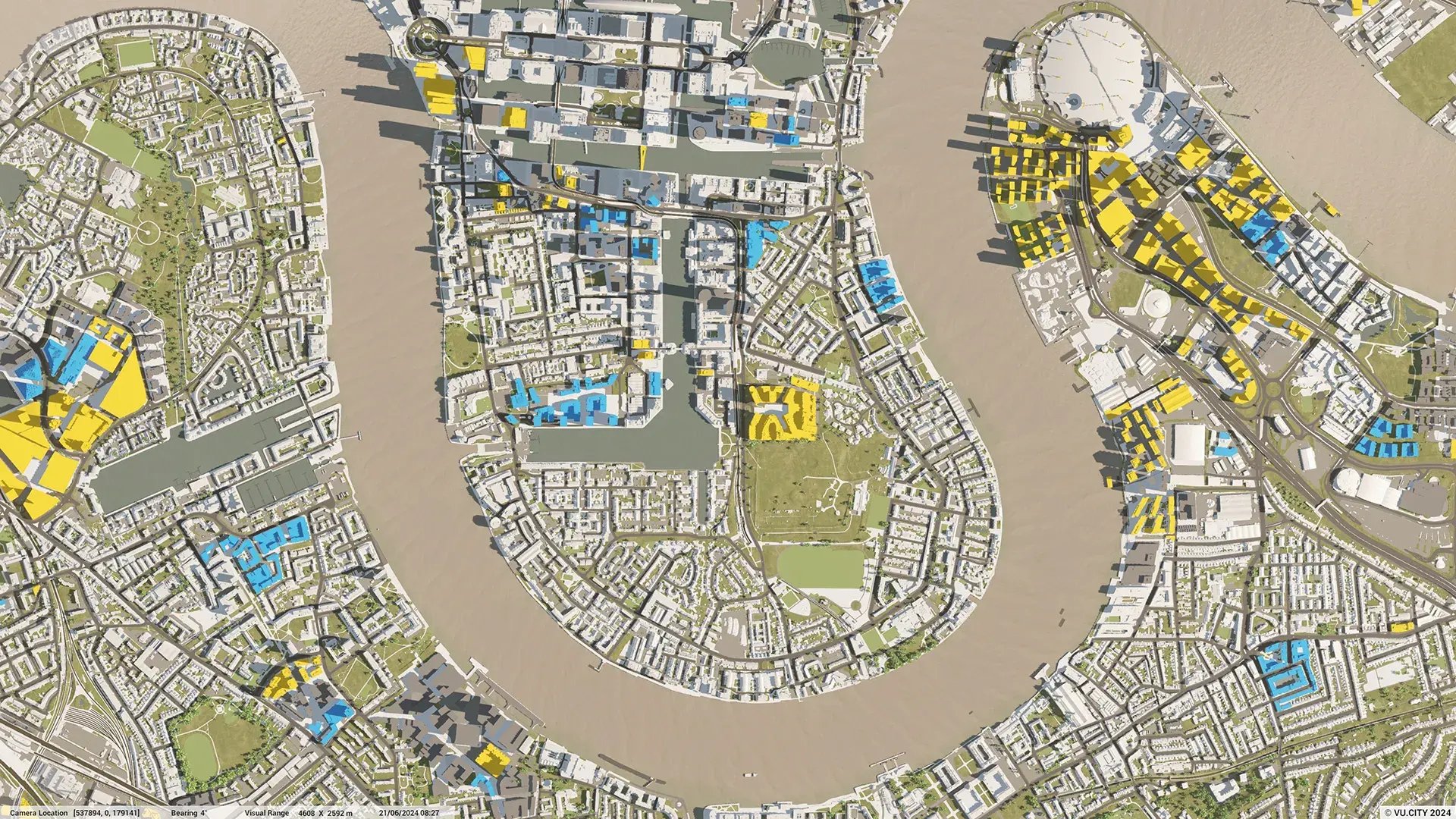

2D MODE
Introducing 2D Mode in VU.CITY: transform how you view and analyse data, city context and your models.

Introducing 2D Mode in VU.CITY
Slide the tab on the image below to see the transition between '2D' (left) and '3D' (right) modes.
Why 2D Views Matter
In VU.CITY, we have always applied a perspective projection when viewing our accurate models. While this approach is generally appropriate and aesthetically pleasing (because it simulates a camera lens), it's not always ideal for the planning process. Architects, planners, and landscapers often need imagery and diagrams without distortion. That's where our 2D Mode tool comes in.

New Features: What You Get
With 2D Mode, VU.CITY users will benefit from several features designed to enhance their planning and analysis capabilities:

NEW CAMERA PANEL CONTROLS
The Camera Panel now includes new readouts and controls specifically for orthographic viewpoints. The Visual Range feature specifies the distance between the top and bottom edges of the screen, giving you precise control over your view.

COMPASS BUTTON AND KEYBOARD SHORTCUT
Switching to Orthographic Top Down mode with a dedicated compass button and keyboard shortcut [P]. This allows for seamless transitions and quick access to orthographic views.

SAVE VIEWS IN THE CAMERA STUDY PANEL
You can now save your orthographic views in the Camera Study Panel, allowing you to revisit and utilise these views throughout your planning process.
Enhanced Drawing Precision ✏️
Utilise the Create Tool, Measurement Tool, and Hide Tool in 2D mode for more accurate drawing results.
Maximise Your Mapping Precision With 2D Mode Exporting 📸
Export 2D Mode viewpoints and then import them back into GiS software to seamlessly align VU.CITY outputs with other map data.
Effortless Navigation and Interpretation 🌍
2D mode challenge 🏆
With 2D Mode, VU.CITY takes a significant step forward in providing the tools you need for accurate, distortion-free planning and analysis. Ready to put your knowledge to the test? Can you guess which famous landmarks you're looking at in our images made using this new feature? Slide right to test your knowledge!














The Importance of Orthographic Views in Urban Planning and Development
Our 2D Mode tool makes up a wider part of Orthographic views, which are critical tool for architects, planners, and developers. Unlike perspective views, orthographic projections allow for a true-to-scale representation of a 3D object without distortion, providing an accurate depiction of structures from the top, front, and side. This accuracy is essential for detailed planning, ensuring that every element of a project aligns perfectly.
For architects, orthographic views are indispensable during the design phase. They offer a precise way to visualise and modify building layouts, structural components, and spatial relationships. Planners use these views to assess the impact of proposed developments on the surrounding environment, facilitating informed decision-making and community engagement. Developers rely on orthographic projections to create detailed construction plans, ensuring that every aspect of the build is executed to exact specifications.
In the development process, orthographic views are particularly valuable during the early design and planning stages. They provide a clear, undistorted view that helps stakeholders understand complex spatial arrangements and identify potential issues before they arise. This can significantly streamline the approval process, reduce costs, and prevent costly revisions later on.
By incorporating orthographic views into your workflow with VU.CITY, you gain a powerful tool for creating more accurate, efficient, and visually compelling urban developments. Explore the benefits today and see how this feature can enhance your next project.